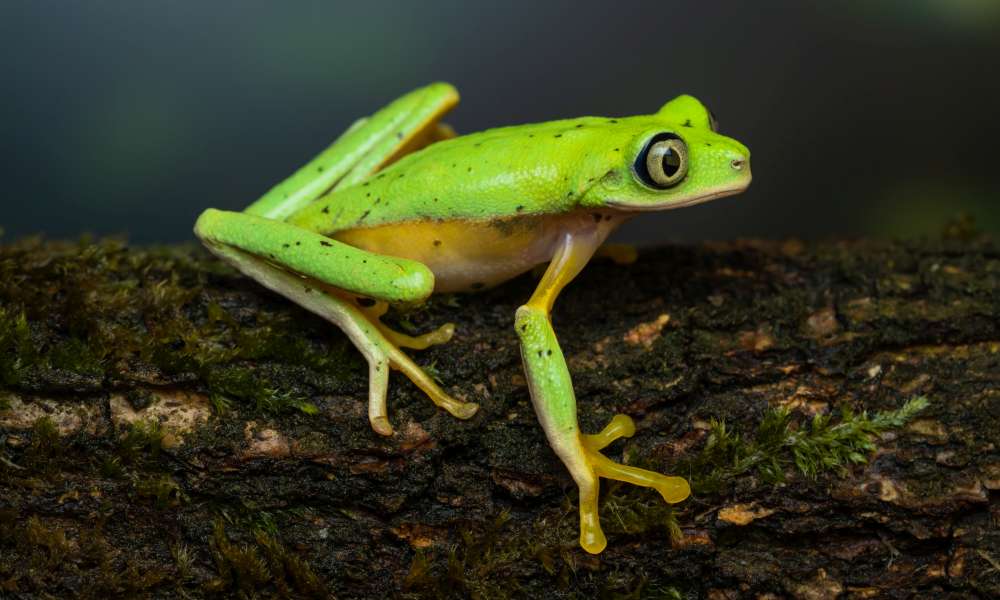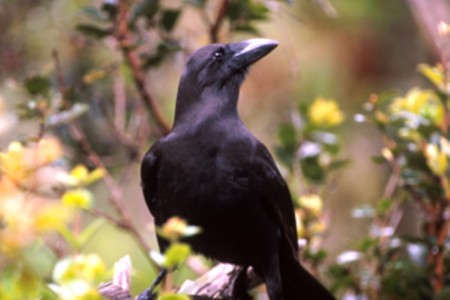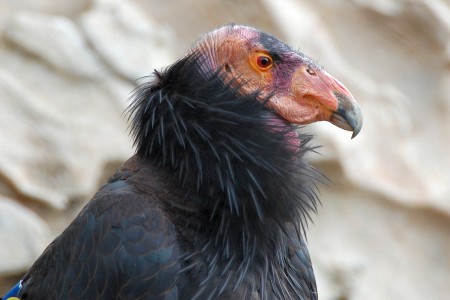

Lemur Leaf Frog
Tiny, Beautiful, and a Critical Species to Preserve

INTRODUCTION
The Lemur Leaf Frog (Agalychnis lemur) is among Earth’s most colorful and charismatic amphibians. Yet this unique frog now faces a deeply uncertain future. Intensifying threats have caused catastrophic population declines that could lead to the Lemur Leaf Frog’s extinction if rapid actions are not taken.
Scientific Classification
• Kingdom: Animalia
• Phylum: Chordata
• Class: Amphibia
• Order: Scorpaeniformes
• Family: Hylidae
• Genus: Agalychnis
• Species: A. lemur
Appearance and Behavior
The Lemur Leaf Frog is incredibly beautiful with its vibrant green, blue, and yellow shades. They typically grow to a size of about 2 to 3 inches (5 to 7.5 centimeters) in length. Its bulging eyes on the front of the head allow it to accurately judge distances when traversing its environment or hunting for prey. Living a nocturnal lifestyle, they spend their days on the undersides of large leaves. This protects it from the sun, while its colors keep it hidden from predators. It’s a walking frog that walks and climbs using its powerful legs. A novel way for a frog to move about.
Habitat and Ecology
The Lemur Leaf Frog is native to the lush rainforests of Costa Rica, Panama, and Columbia, where it is often found on leaves near water sources. Under natural conditions, its estimated lifespan is around 7 years, and it primarily feeds on insects and other small invertebrates found within its rainforest habitat.
The reproductive habits of the Lemur Leaf Frog are as fascinating as its appearance. These frogs lay their eggs on leaves that hang over water sources like ponds or streams. Once the eggs hatch, the tadpoles drop into the water below, continuing their development. These tadpoles possess specialized mouthparts that help them adhere to surfaces like rocks, allowing them to feed on algae and detritus. As they grow, they undergo metamorphosis, eventually developing into adult frogs. This unique reproductive strategy helps ensure the species’ survival by minimizing competition among tadpoles in crowded water sources.
Conservation Status
The Lemur Leaf Frog was last assessed in 2019 and listed as critically endangered on the International Union for Conservation of Nature’s (IUCN) Red List of Threatened Species. The population has decreased by up to 95% and continues to decline. Despite its captivating features, the Lemur Leaf Frog faces threats due to habitat loss caused by deforestation and pollution.
Climate change also poses risks to its delicate rainforest habitat. Efforts to conserve this species include protected areas and captive breeding programs. Raising awareness about the importance of rainforest ecosystems and the species that inhabit them is crucial for the survival of the Lemur Leaf Frog and other creatures that depend on these habitats for their existence.
The Lemur Leaf Frog’s adaptations for survival, including its nocturnal lifestyle and leaf-dwelling behavior, highlight the incredible diversity of life within rainforest ecosystems. By understanding and appreciating the Lemur Leaf Frog, we can also understand the broader importance of conserving these fragile and vital environments.
THREATS TO LEMUR LEAF FROGS
Habitat Loss and Fragmentation
Once found in much of Central America, they are now found only in isolated pockets in Costa Rica and Panama. Several issues have contributed to their demise, with the greatest threat facing them being habitat loss and fragmentation driven by human destruction of the tropical forests they need for survival.
Disease
Devastation from the lethal chytrid fungus has decimated populations of the Lemur Leaf Frog and other species. The study, Origin of the Amphibian Chytrid Fungus, states that researchers identified the chytrid fungus (chytridiomycosis) only in 1938. It remained a stable endemic infection in southern Africa for 23 years before appearing outside of Africa.
With human help, it has since spread to virtually all parts of the planet and affects a great number of species. Climate change exacerbated the spread of the illness once it arrived in Central America and added to the lack of habitat locations.
Survival Situation Critical
According to the International Union for Conservation of Nature (IUCN), Lemur Leaf Frogs have experienced an 80% population decline in just 10-15 years as chytrid decimates frog populations globally. Their limited habitat range and the fungus also make them vulnerable to extinction.
These threats and others could very well become the final death blows for the beautiful, tiny Lemur Leaf Frog. Scientists estimate that only around 10,000 adult frogs remain in the wild today, and the IUCN has declared the species critically endangered—just one step away from extinction. Without intervention, we could witness the disappearance of this beautiful and eco-important species.
IMPORTANCE OF LEMUR LEAF FROGS

Role of the Lemur Leaf Frogs in Rain Forests
As insectivores, the disappearance of Lemur Leaf Frogs will disrupt the broader food web in complex and potentially devastating ways. By feasting on insects like mosquitos and flies, they help regulate populations of these pervasive pests. Mosquitos not only annoy humans and animals, but they also spread diseases like malaria, dengue, and zika that pose major health risks in Central America and other regions. Without Lemur Leaf Frogs acting as a natural pest control, insect numbers could explode, spreading more disease among human populations already struggling with the effects of global climate change.
Lemur Leaf Frogs also serve as a source of abundant food for predators in the rainforest, like snakes, birds, and mammals. If they vanish, these predator populations will suffer from losing an important nutritional source. As with all environmental food issues, losses of one food source create a ripple effect up and down the food chain. Species that relied on frogs for sustenance will now compete for alternate prey, putting increased pressure on other species, and so forth. The delicate rainforest ecosystem is thrown out of balance, and biodiversity is undermined.
Providing Benefits on Many Levels
On a human level, losing the Lemur Leaf Frog would deprive local communities of much-needed ecotourism income. Their vibrant colors, oversized eyes, and unique appearance make tourists worldwide eager to see these charismatic animals up close. Ecotourism focused on Lemur Leaf Frogs provides important, well-paying jobs to local community members who act as guides, allowing them to derive income from sustainably sharing their natural heritage with enthusiastic visitors. Without the frogs as an ecotourism calling card, communities lose out.
The Lemur Leaf Frog also benefits the local populations by helping regulate local water cycles through evapotranspiration and providing habitats for plants used by indigenous peoples. Without them, the forests they occupy are degraded, and the provision of clean air, water, and plants that nearby communities depend on for health, food, and livelihoods declines. The loss of services these tiny frogs provide is not limited to local populations. The tropical rainforests of Central America absorb massive amounts of carbon dioxide from the atmosphere, cleaning the air and mitigating climate change that affects the entire planet and all species. These areas are often referred to as the Lungs of the Earth, and when they are not functioning as they should, we all pay a price.
By conserving the Lemur Leaf Frog, we protect individual species and ensure the health and vitality of the expansive rainforest ecosystem, which brings indispensable ecological advantages to local and global communities. They are an indicator species, which means that their decline is flashing a bright red warning about the dangers occurring to the entire tropical ecosystems. If they are no more, their loss, intertwined with other plants, animals, and local communities, will certainly start a downward spiral that threatens countless species, including humans. Saving them is about much more than just helping one animal – it is about securing the viability of entire rainforest ecosystems, and we need to heed the warnings.
HOW TO HELP LEMUR LEAF FROGS

Dire as their plight is, conservationists remain guardedly optimistic that we can still save the Lemur Leaf Frog through intensified efforts. A very important effort to protect the remaining rainforest habitat from deforestation is crucial.
Breeding Programs
Captive breeding programs at institutions such as the Smithsonian’s National Zoo in Washington, D.C., the Panama Amphibian Rescue and Conservation Project near Panama City, and the Atlanta Botanical Gardens in Georgia have achieved success in both breeding and releasing this species.
Diseases Treatments
Researchers are also developing probiotic treatments to inoculate frogs against chytrid in both the wild and in laboratories. Test methodologies to administer treatments efficiently across populations and global efforts to curb climate change and limit the spread of wildlife diseases must continue. With such efforts, scientists believe lemur leaf frog numbers could start to recover.
More Crucial Actions
Turning the tide on the edge of extinction will require intensified action on all fronts. Here are key steps we can take to save the Lemur Leaf Frog and other tropical species:
- Expand protected habitat and connect fragmented forests where Lemur Leaf Frogs live. This requires governments, landowners, and indigenous communities to work together to limit deforestation and restore tropical forests.
- Increase funding and engage zoos around the world in ex-situ breeding programs to release captive-bred frogs into secured habitats.
- Enhance law enforcement and international cooperation to stop illegal wildlife trafficking of Lemur Leaf Frogs. Curbing the illegal pet trade removes that threat.
- Build rainforest field research stations with local partners to monitor lemur leaf frog populations and trial conservation interventions. This creates jobs while generating data to target efforts.
- Foster education programs in local communities to build pride and a conservation ethic around lemur leaf frogs as a shared national symbol.
- Promote ecotourism focused on lemur leaf frogs, which provides income to local communities from tourists eager to see these rare jewels of the rainforest.
Support Trusted Organizations
These are a few of the organizations committed to protecting forests and biodiversity in Central America and around the world. They could use your help and support.
- Rainforest Alliance: The Rainforest Alliance is a nonprofit organization that works to conserve biodiversity and ensure sustainable livelihoods by transforming land-use practices, business practices, and consumer behavior. They have several programs in Central America, including:
- The Central American Agroforestry Program: This program helps farmers transition to agroforestry systems, which combine trees with crops and/or livestock. Agroforestry systems are more sustainable than traditional agriculture and can help to protect forests.
- World Wildlife Fund (WWF): WWF is a global conservation organization that works to protect wildlife and their habitats. They have several programs in Central America, including:
- The Central American Forest and Climate Initiative: This program is working to reduce deforestation and promote sustainable forest management in Central America.
- Conservation International: Conservation International is a nonprofit organization that works to protect biologically important areas around the world. They have several programs in Central America, including:
- The Mesoamerican Reef Conservation Program: This program is working to protect the Mesoamerican Barrier Reef System, which is the second-largest coral reef system in the world.
- The Central American Biodiversity Corridor: This program is working to create a connected network of protected areas that will help to preserve biodiversity in Central America.
- Rainforest Trust: Rainforest Trust is a nonprofit organization that works to protect rainforest land. They have several projects in Central America, including:
- The Mesoamerican Biological Corridor Land Protection Program: This program is working to protect key parcels of land within the Mesoamerican Biological Corridor.
- The Central American Forest Protection Program: This program is working to protect forests in Central America from deforestation and other threats.
- Asociación Costarricense para la Conservación de la Naturaleza (ACCCN): ACCCN is a Costa Rican nonprofit organization that works to conserve biodiversity and promote sustainable development. They have a number of programs in Costa Rica, including:
- The Osa Peninsula Conservation Program: This program is working to protect the Osa Peninsula, which is one of the most biodiverse places on Earth.
- The Monteverde Conservation Program: This program is working to protect the Monteverde Cloud Forest, which is a world-renowned cloud forest reserve.
The Lemur Leaf Frog’s future now hangs in the balance between extinction and survival. By mobilizing resources, stewarding rainforest habitats, and unleashing conservation science, we can ensure these fantastic amphibians survive for future generations. If Lemur Leaf Frogs do disappear, humanity loses not only a uniquely captivating animal but an indicator of our profound impacts on the natural systems that sustain all life, including human lives.
This stunning frog’s story parallels that of countless other less charismatic but equally precious species. The choice ahead is starkly clear; we take decisive action now, or the swift collapse of the planet’s ecosystems will occur. Time is short, but we can pursue the options we have to save the environment that we have been hugely damaged. A harmonious coexistence between civilization and biodiversity that keeps the planet safe and livable is possible. But we must turn ideas and intent into action – now. When the time comes, please vote for those who truly value our planet—it’s the only home we have.













